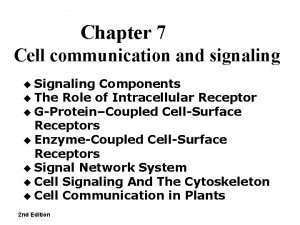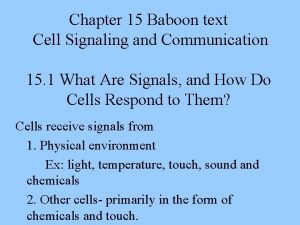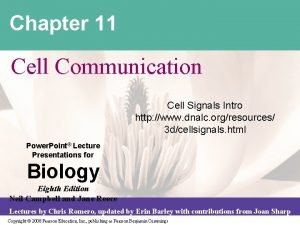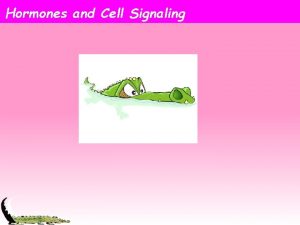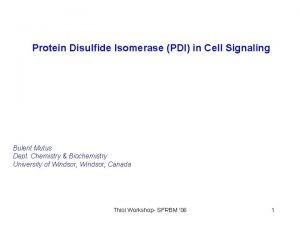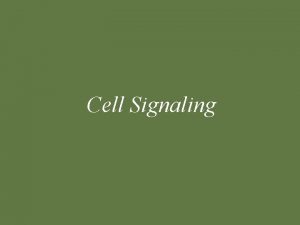Cell Signaling Cellular responses due to cell signaling







- Slides: 7

Cell Signaling

Cellular responses due to cell signaling �Changes in the activity or function of specific enzymes and other proteins present in the cells �Changes in the amount of protein produced by a cell e. g. modification of transcription factors that stimulate or repress gene expression �Transcription: Transcription is the first step of gene expression, in which a particular segment of DNA is copied into RNA by the enzyme RNA polymerase. �Transcription factor: is a protein that binds to specific DNA sequences, thereby controlling the flow (or transcription) of genetic information from DNA to m. RNA

�Ligand binding to cell-surface receptors triggers activation of transcription factors that determine the precise pattern of gene expression. �Long term signaling responses: division, differentiation, communication with other cells �Alterations in the signaling pathways cause human diseases e. g. cancer, diabetes, and immune defects. �Signals are essential in enabling differentiated cells to respond to their environment by changing their shape, metabolism or movement

� 1. NF-k. B impacts expression of more than 150 genes involved in the immune response to infection. �Activated by many protein hormones that act on immune system cells � 2. Cytokines maintains appropriate levels of blood cells

8 classes of cell surface receptor that activate transcription factors �Ligand binding causes activation by inducing 2 or more receptors to form a complex �Most signaling pathways involve 1 or more protein kinases �Kinase can be: 1. Intrinsic part of receptor 2. Tightly bound to the receptor


